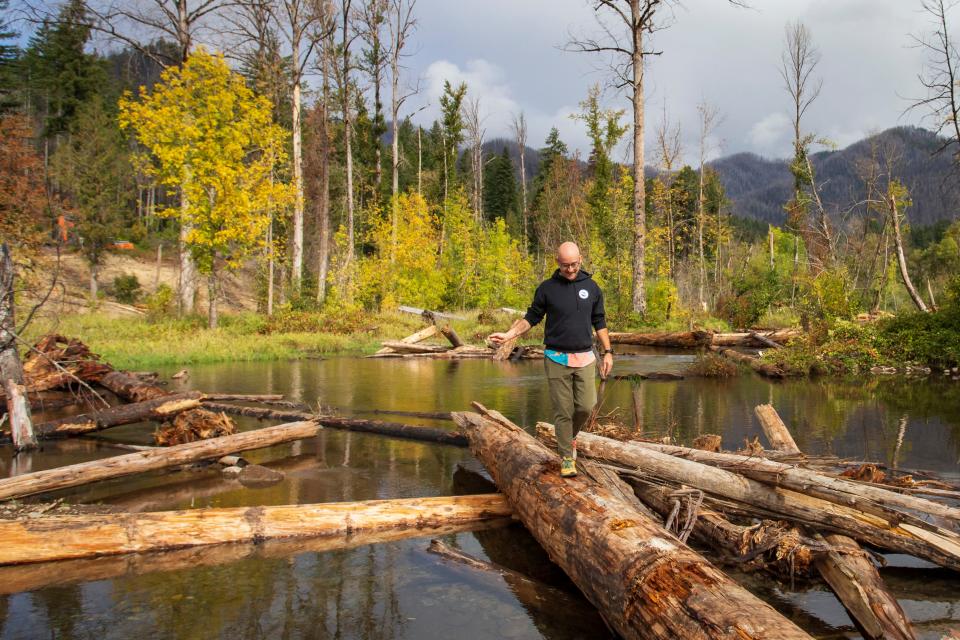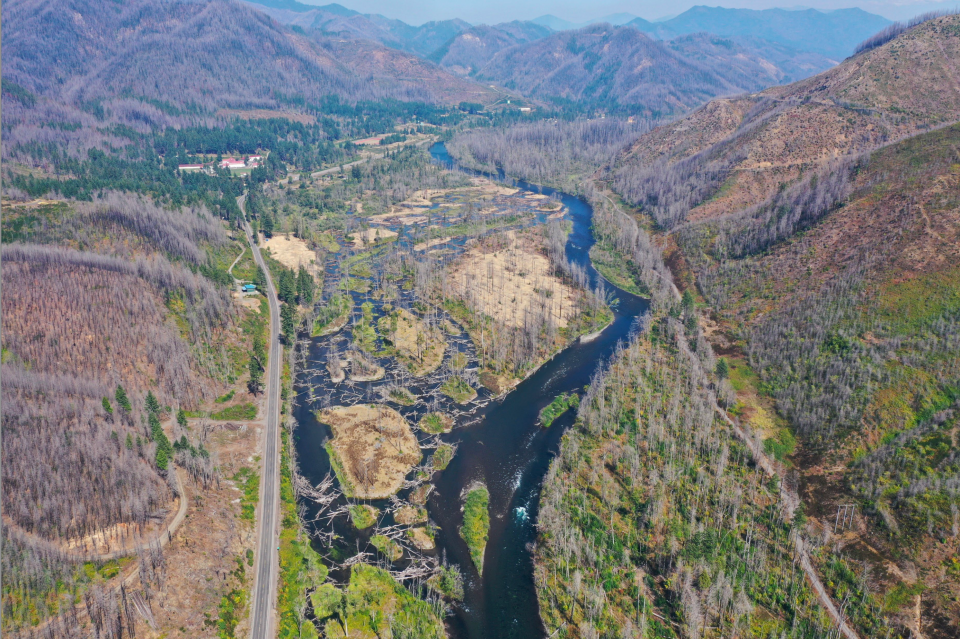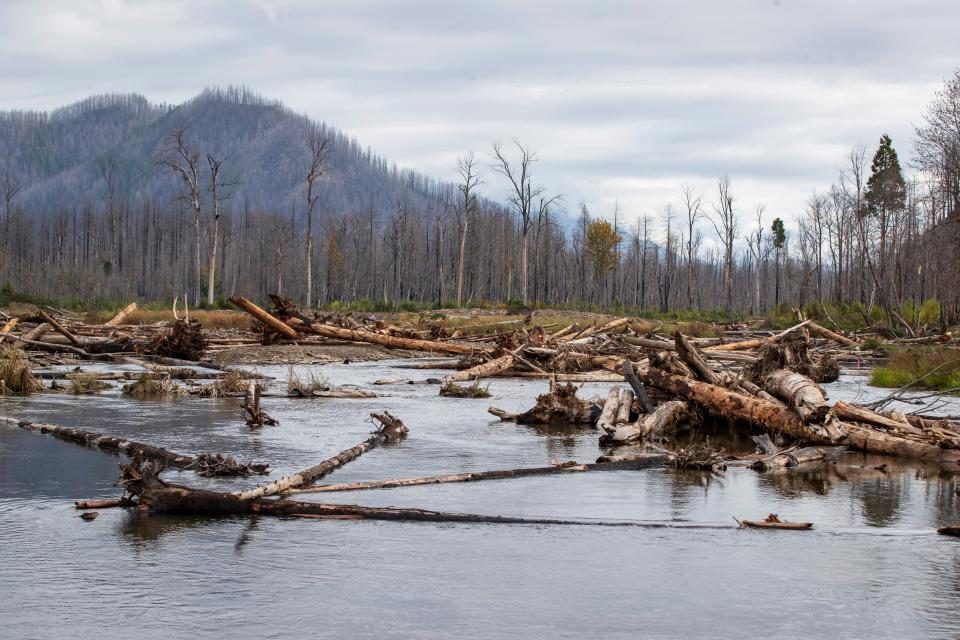A good log jam? How restored habitats aim to help returning salmon on McKenzie River
To a passerby, the twisted maze of logs and widened McKenzie River channel at Finn Rock Reach may look like the result of a winter storm or major flood. But the 150-acre log jam was the carefully thought-out result of a series of river conservation projects nearly seven years in the making.
Nestled between Finn Rock and Blue River, Finn Rock Reach is a tangled mess of logs and islands designed to slow river flow and create spawning habitat for Chinook salmon making their way up the McKenzie.
“The point of these projects is that we reset the natural geomorphology for the valley bottom,” said Eli Tome, director of conservation for McKenzie River Trust.

Historically, the McKenzie River would have stretched from valley wall to valley wall, but centuries of colonization resulted in an unobstructed, swift flowing channel pushed against the far side of the valley, Tome said.
“The process-based restoration looks at reestablishing the processes that can help make a more resilient River,” said Tome. “All of those habitat pieces kind of mimic what it would have looked like 400 years ago.”
How the project works
The project was accomplished by lowering floodplain elevations through excavation, filling in deeper spots and adding wood to spread out and slow down water. The river channel went from being about 100 feet wide to roughly three-quarters of a mile.
Widening the channel and slowing flows allows more time for filtration of the water and settling of sediment and other pollutants carried in the river. These changes create better spawning and fish rearing habitats as well as cleaner water.
“The limiting factor for salmon survival in the McKenzie is actually rearing habitat,” Tome said. “That just means that the water's moving too fast in a lot of spots, and they don't have a place to rest.”

Finding the right partners
McKenzie River Trust, a nonprofit land trust formed in 1989, purchased the Finn Rock Reach site at auction in 2016 and initially planned to add wood to Cone Creek, which passes through the site to create new spawning habitats.
Through a partnership with Eugene Water & Electric Board, the U.S. Forest Service and McKenzie Watershed Council, the project expanded to a two-phase more than $4 million restoration effort.
In 2021 the trust finished the first phase of the project by transforming 85 acres of riparian floodplain forest on the downstream end of the property.
Phase two, which wrapped up in September, saw the infill of a gravel pit on the site, excavation of high areas, addition of wood throughout the floodplain and the planting of willow sprouts and other greenery. Through a partnership with EWEB, the trust will be planting an additional quarter-million plants on the site this winter.
Wood scattered across the floodplain project was primarily harvested from the site after the Holiday Farm Fire burned through the region in 2020.
“The systems are ready to regrow, you know, they just need to be given the right tools to do it,” said Susan Fricke, water resources director for EWEB. “They just didn't have the right tools for so long.”
Measuring long term success

The site has begun to show signs of wildlife recovery already. Before the restoration there were nine salmon nests, called redds. The most recent survey saw 56 redds across the project area.
“We're trying to give them places where they can thrive,” said Fricke. “Because the bigger and healthier you can grow them within the system – when they get out to the ocean – they can be more competitive, and then we can get more of those salmon returning.”
Long term success of the site will not be measured in number of redds due to the difficulty in accurately counting them, but rather in documentation of wetted width of the river, habitat availability and geomorphological assessment of the landscape.
In addition to habitat improvements, Fricke said the project will help improve water quality and improve resiliency in downstream infrastructure, such as decreasing costs at the Hayden Bridge drinking water treatment plant.
The partnership has restored more than 400 acres between Finn Rock and the headwaters of the McKenzie River. Projects are planned for an additional 1,300 acres of restoration sites within the next 10 years.
“You can't just give one area for fish to spawn and stuff, you need a whole network,” Fricke said.
Contact multimedia journalist Ben Lonergan at blonergan@registerguard.com or follow him on social media @lonerganphoto.
This article originally appeared on Register-Guard: Restored habitats await returning Chinook salmon on McKenzie River

